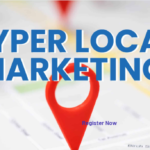Social media is a great way to generate traffic and brand awareness but it is not so easy for instant conversions or lead generation.
Here are a few ways to drive traffic and convert it into conversions, sales and leads from your social media channels.
1. Set up your social media profiles
This is a fundamental step a surprising number of businesses are missing: Make sure your social media profile provides a clear way to learn more about your company, read clients’ testimonials and contact you.
Instagram bio allows a single clickable link, so it is a bit limiting, especially if you want to highlight several products or link to your other social media channels. Yet, there are tools that allow you to easily create social-media-friendly landing pages that are well branded and engaging, for free.
Link In Bio by Lightricks is a free tool that helps you maximize your bio by letting you create a beautiful, easily customized, and mobile-friendly landing page to promote whatever links make the most sense at a given moment – campaign-specific content, seasonal offers, more social profiles, a newsletter signup, etc.
When it comes to B2B, Linkedin is one of the best social media platforms to utilize. Yet, while most businesses have at least some Linkedin presence, they take surprisingly little care about what their profiles look like there.
For company profiles
- Set up your custom URL
- Add a detailed description
- Add your logo and header image
- Create a custom button (i.e. your CTA to direct people to your lead generation form)
For employees’ profiles
Those of your customer-facing employees (like sales people, customer support team, outreach agents) should have:
- A real and professional profile picture
- Job description
- A business email address for people to be able to get in touch
Like Instagram, Twitter doesn’t give a ton of options as to modifying your business or personal profile page. You can add a profile picture, a header image, a short description and a link. You can use the same Link In Bio link here as you use on Instagram to allow your prospects to choose how they want to engage back with your business or its representatives.
2. Foster brand recognition
A recognizable brand is a long-term asset that will make any aspect of your brand easier, from organic rankings to lead generation, and social media is one of the most effective tools to build your brand.
They say, one needs to see something at least 8 times to remember it, so make sure you do a lot on social media, across multiple channels, to pop up in your target customers’ feeds again and again, until they remember you.
Plenty of your prospective customers will encounter you in various channels. They’ll see your posts on Twitter and Facebook, and see your Instagram updates, and if your content is inconsistent, it will muddy their impression of you. Keep things clear, and your brand will benefit.
Creating a recognizable brand benefits both SEO and sales, and social media is one of the best tools to do that.
Social media is a colorful, inviting place. It revolves around images, art, and innovation. As such, it’s important that you steer into this creative focus with your own company’s content. You can do this in multiple ways, such as:
- Creating quality content: If you quickly snap a photo and slap it up on your Instagram account, no one is going to notice it. However, carefully thought out images that are designed to stand out can help you attract attention in a very saturated marketplace. Use bright colors, interesting backgrounds, and above all, be purposeful.
- Look for unique approaches to your content: Everyone’s taken a picture of a freshly brewed cup of coffee. At this point, it screams mundane. What if you’re the one company that posts a picture of an employee doused in cold brew, though? In other words, if you can find a unique angle to promote your products and services, it will help you cut through all of the white noise.
- Inspire users to be creative: Sometimes you need synergy to keep the creative fires lit. For instance, if you have a brewery, make a one-of-a-kind coaster for your brand. Then, encourage people who visit your location to create user-generated content by snapping a picture of the coaster and posting it on Instagram — after tagging you, of course.
Regardless of the specifics, if you look for ways to be creative, you’ll be far more successful in generating organic attention on your Instagram profile.
To that end, you should create a varied content calendar (and line up helpful tools) to steer your content-production efforts for the next year or so. It doesn’t need to be complete, and you should leave gaps for spur-of-the-moment work, but it should encompass the general topics you want to address plus the audiences you’re trying to reach with them.
Social media users are attracted to personality, spirit, enthusiasm, and humor. You’re trying to win them over with your brand, and if you seem boring or generic, that won’t happen. You can’t be lax, of course (there are major risks to veering away from your brand guidelines), but you can be informal.
3. Locate Your Target Audience
The economy of effort is hugely important in social media marketing. Even with powerful tools on your side, you can’t be everywhere at once (and if you could, it would prove counterproductive through making your brand seem intrusive). You need to find your prospective buyers so you can do whatever you can to target them specifically.
Awario will help enormously with this task, but it will still require a lot of manual effort. You’ll need to get involved in conversations, looking very closely at the exchanges taking place to discern how much value there would be in targeting them (for instance, rooting through a subreddit to gauge how heavily the users spend).
If you don’t know where you’re trying to sell, then your effort will all be arbitrary, and much of it will achieve nothing. You’ll also struggle to cater your messages as required. Accordingly, you should take as long as you need for this step, and only proceed to the next when you’re entirely confident that you know what you need to do.
Think about the companies that thrive on social media, and look into how they participate in conversations. Find the elements you like, and emulate them. It’s all about nailing down the fundamental limitations on your social selling so that everything beyond that can be creative.
4. Invest in retargeting ads
Finally, social media ads may not work that well in B2B, but using those social media ads to retarget to those prospects who already visited your site is a great way to get those prospects converted into leads.
Installing Facebook’s tracking pixel is pretty easy and you will start accumulating your data right away. Likewise, Linkedin offers a retargeting option as well.
Make sure you have a well set-up, mobile-friendly and fast-loading product page when you invest in social media advertising. Speed optimization tools can be of big help here.
When investing in retargeting ads, make sure to segment your audience to better personalize their experience. You can remarket to people who visited a certain page or performed a certain action.
This way you can match your ad to their previous engagement with the site and personalize their on-site experience. Remarketing is more effective if you:
- Shorten your sales funnel (to eliminate any barriers)
- Set up additional conversion funnels (e.g. free demo or a free download).
Look for ways to experiment and diversify your call-to-action and lead generation process. There may already be a lot of opportunities in your niche.
Conclusion
Social media can be a great lead generation channel which can drive direct conversions as well as act as a supplemental tool for your lead generation efforts. It takes a strategic approach for it to work though:
- Agreement that this is important
- Allocating dedicated time, resources and budget
- Openness to getting outside help or training
- Including it as an agenda item in key meetings
- Integrating it with other marketing initiatives
- Having articulated goals for the social media efforts
- Allowing for experimentation, creativity and failures
- Accepting the possibility of some negative consequences (e.g. visible complaints, the occasional online faux pas)
- Tracking activities and results
Ensure that everyone is on the same page. A large social media marketing campaign needs a lot of people working on it, and everyone needs to know about your guidelines. If you let someone post without reading and agreeing to them, you’re asking for trouble.
It takes time to find best-working tools and tactics but with enough consistency you will see it work. Good luck!





